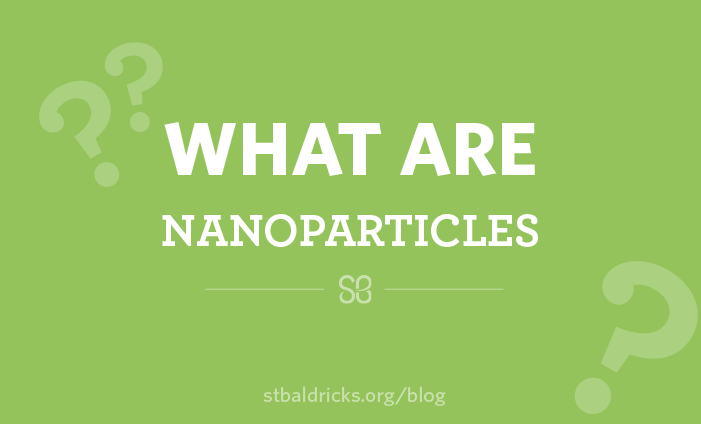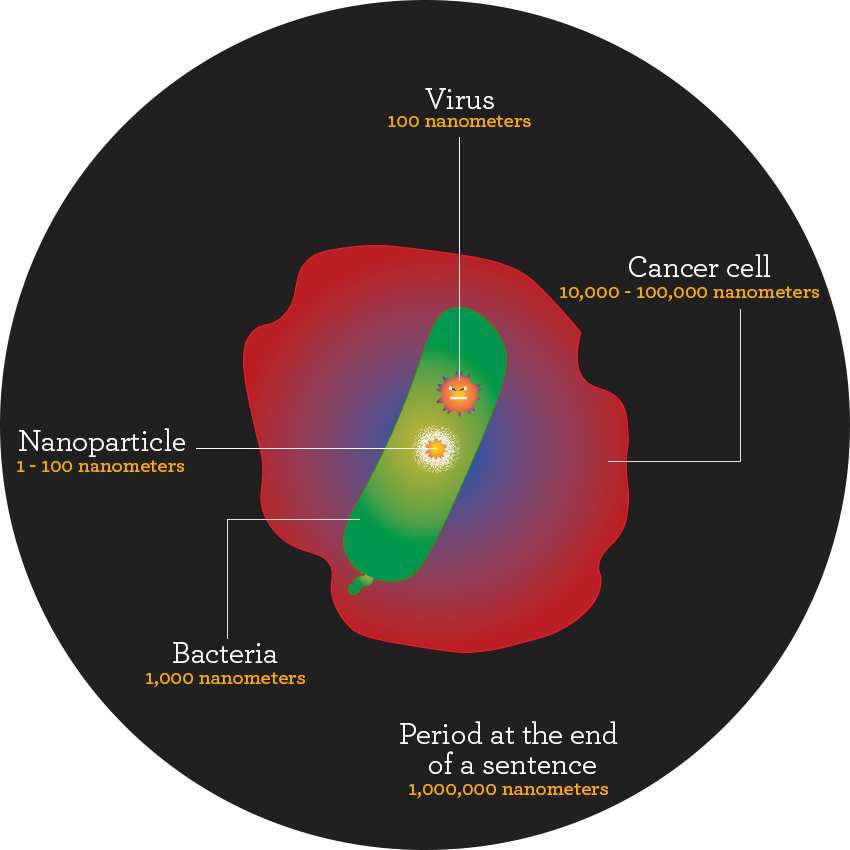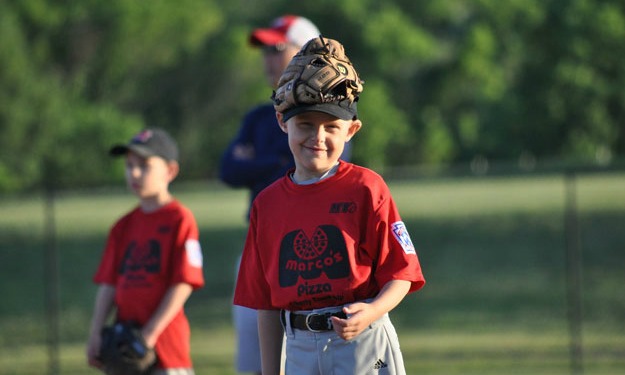St. Baldrick’s researcher Dr. Brodeur knows that tiny things can have a big impact on cancer. He studies nanoparticles and how they can be used to deliver cancer-fighting drugs to tumors, without hurting healthy cells. Read on to learn more.

Good things can come in small packages — really, really small packages.
Nanoparticles are teeny, tiny particles. How tiny? You could fit about one million nanoparticles in the period on the end of this sentence. St. Baldrick’s researcher Dr. Garrett Brodeur is studying how these tiny lab-created particles can be used to help kids with cancer.
Instead of blasting the whole body with chemotherapy, nanoparticles can act as minuscule envelopes, bypassing healthy cells and carrying the drug straight into the tumor.
How itty-bitty are nanoparticles? See how they size up to other itty-bitty things:

How do nanoparticles kill cancer cells?
This is possible because of something called the EPR effect, or enhanced permeability and retention.
Dr. Brodeur explained that the blood vessels in normal tissues are tightly built, while vessels in tumors are more haphazardly constructed, because tumors grow more quickly. Because of this, the vessels in tumors have more holes, making them leakier — that’s enhanced permeability.
Tumors also lack the efficiency of healthy tissue when it comes to pumping out extra fluid. Because of this, things that get into a tumor stay in the tumor longer — that’s enhanced retention.
Nanoparticles are brilliant drug deliverers because of the EPR effect and their size and shape, Dr. Brodeur explained, which allows them to quietly seep into tumors.
Since nanoparticles are biodegradable, they can only last so long in circulation. But that’s a good thing — they continue to fight cancer even as they break down to their harmless components.
“They slowly start breaking down, they release the drug in the tumor, and then they kill a tumor cell. That releases the drug in the tumor cell and that kills other tumor cells,” Dr. Brodeur said. “It’s really very cool. It’s wicked awesome.”
How effective are nanoparticles at delivering cancer drugs?
Dr. Brodeur found that not only can nanoparticles deliver drugs, they can deliver drugs more effectively than traditional drug delivery by injection or ingestion.
When kids with cancer get an infusion of chemotherapy or take a pill, only a small fraction of the medicine actually makes it to the tumor, Dr. Brodeur said.
“Using nanoparticles, based on our own experiments, we can increase that by 100-fold to 200-fold. So, we can get dramatically more drug in the tumor with the same dose as would be given in conventional therapy,” he said.
Because the drug is trapped in the nanoparticles, the child’s body would be less exposed to the drug’s toxicity, he explained. That means fewer long-term side effects down the road.

Dr. Brodeur was awarded the Invictus Fund St. Baldrick’s Research Grant in July. The grant is named for the Invictus Fund, which was created in memory of Honored Kid Holden and his unconquerable spirit. Honored Kid Holden passed away from a bilateral Wilms tumor.
Is this treatment available to kids?
There are different kinds of nanoparticles and different drug combinations that are currently being used to treat kids with cancer. In fact, a California company specializing in nanoparticles recently received approval from the FDA for a drug formulation meant to treat Ewing sarcoma.
At this point, Dr. Brodeur’s work with nanoparticles is not yet being studied in children with cancer, but eventually he wants to bring this research to patients through a clinical trial. The support of St. Baldrick’s has been crucial in laying the groundwork to get there.
“Your support makes it possible for us to get to the next level,” he said.
Help researchers like Dr. Brodeur get to that next level — fund childhood cancer research today.
Read more on the St. Baldrick’s blog:


 SBF
Tweets »
SBF
Tweets »